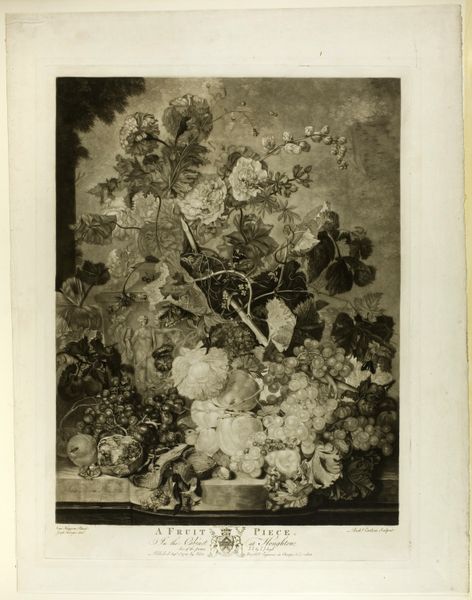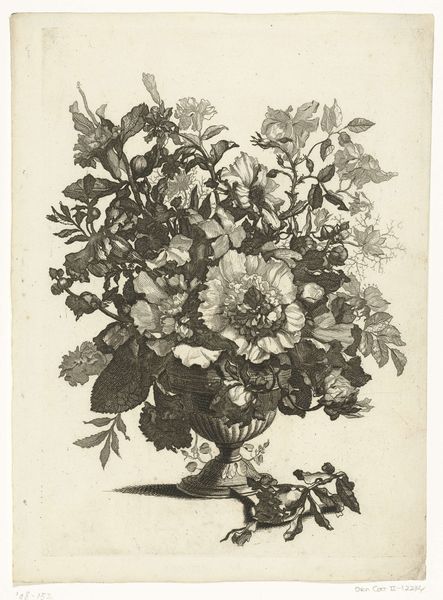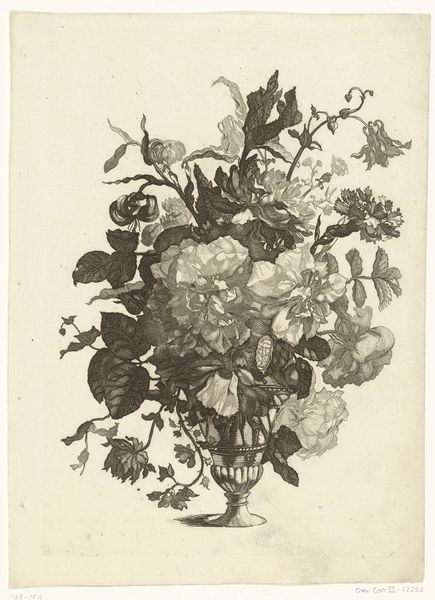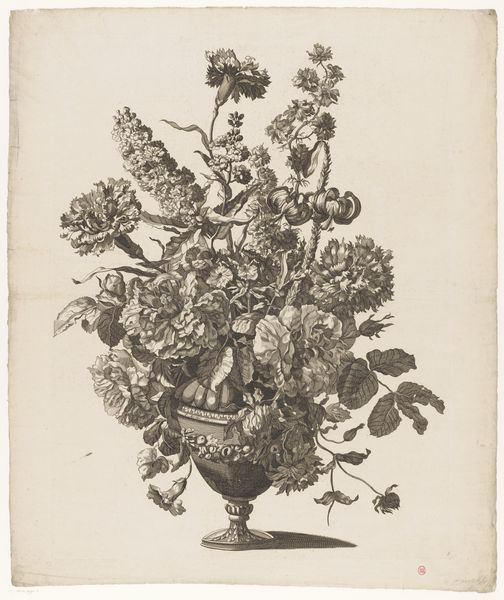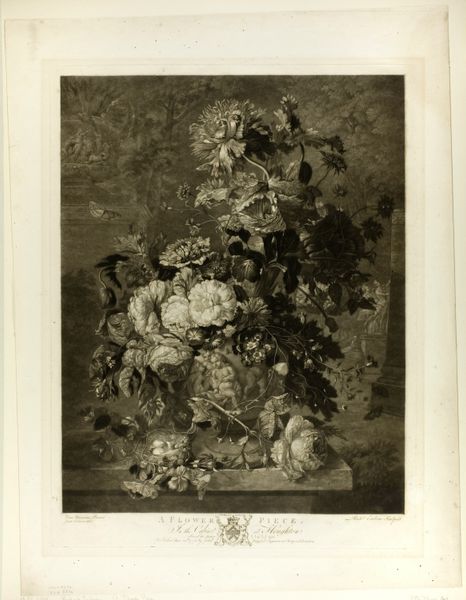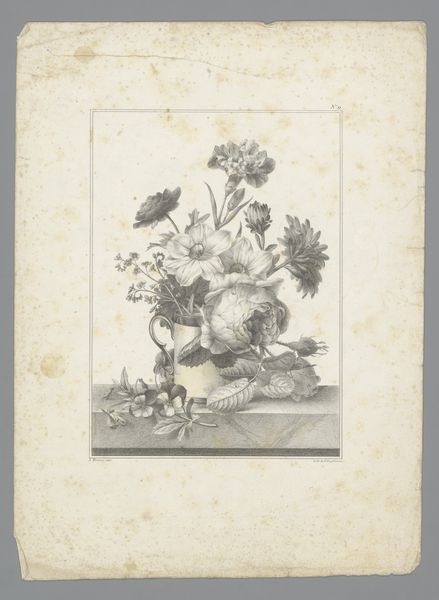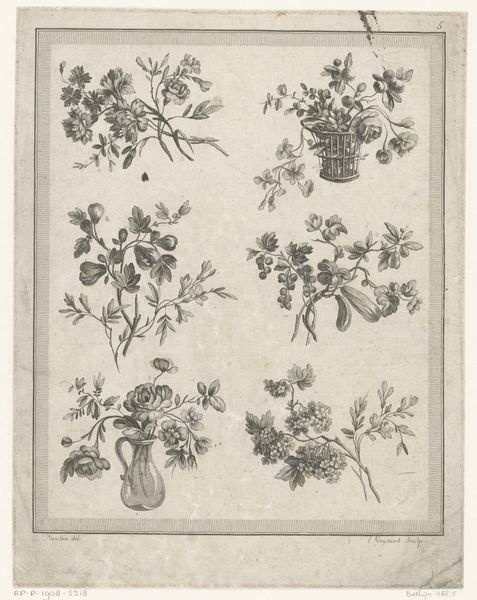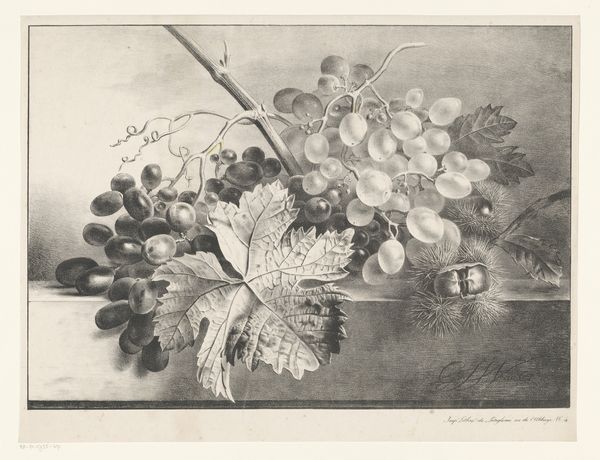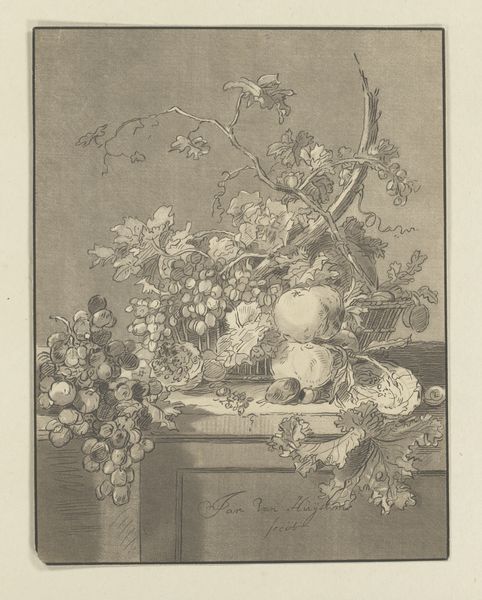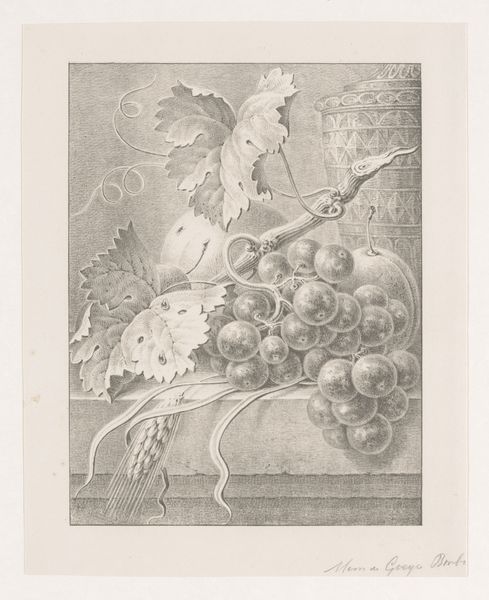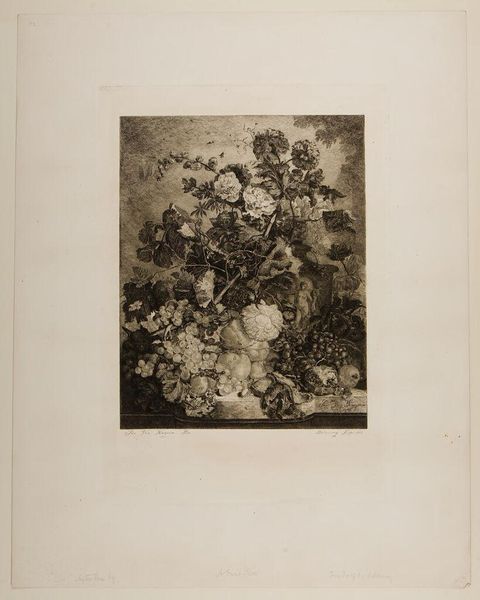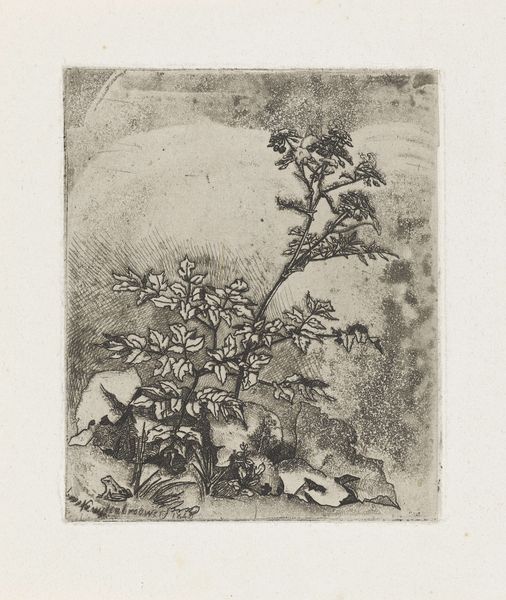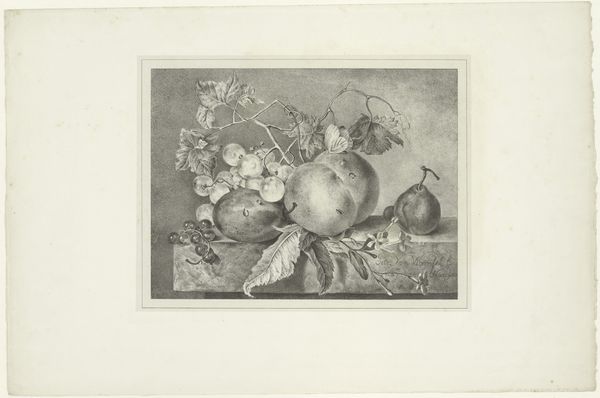
print, engraving
#
baroque
# print
#
landscape
#
figuration
#
fruit
#
engraving
Dimensions: height 556 mm, width 420 mm
Copyright: Rijks Museum: Open Domain
Curator: What a captivating study in monochrome! Richard Earlom’s engraving, “Still Life of Fruit and Flowers,” created sometime between 1723 and 1781, showcases the grandeur typical of Baroque still life, but executed through the sharp lines and tonal ranges of a print. Editor: It's certainly dramatic. The dark background pushes the overflowing arrangement of fruits and flowers forward, almost bursting out of the frame. There’s a clear dynamism achieved through the composition itself, the way the forms intersect and cascade downwards. Curator: Yes, and the symbolic language is rich here. Flowers have historically been associated with beauty, but also with fragility and the ephemeral nature of life. Similarly, fruit represents abundance and fertility but also the inevitability of decay. Editor: I agree, there is a strong element of memento mori contained here. Yet, the artist's attention to texture mitigates that feeling somewhat. Look at how he differentiates between the smooth skin of the fruit and the velvety petals of the flowers through the engraved lines. Curator: Notice too the inclusion of the sculpted figure in the background—likely a classical reference to amplify ideas about beauty and perhaps memory, depending on which goddess it represents. Its integration reinforces this piece as more than just an exercise in skillful rendering; it taps into longer artistic traditions and cultural meanings. Editor: And its form, along with other classical elements here, really creates another layer of engagement by pulling these references and ideas into conversation with the central images in a very thoughtful way. The interplay of shadow and light across the surface creates a palpable sense of volume, emphasizing its three-dimensionality despite being a two-dimensional print. Curator: Precisely. Earlom masterfully translates color into tone, inviting us to contemplate not just the physical beauty before us but also its deeper symbolic resonances and artistic heritage. It's housed here at the Rijksmuseum now. Editor: I found myself truly enjoying how this artwork employs what seems like a standard style in totally refreshing ways; It offers a surprisingly refreshing view.
Comments
rijksmuseum about 2 years ago
⋮
Right before Empress Catherine the Great of Russia bought Sir Robert Walpole’s entire art collection, Richard Earlom made large prints of several of the famous paintings in it as mementos. Among them was this 1723 still life by Jan van Huysum. Earlom worked in mezzotint, a technique also called the ‘black manner’. This method made it possible to produce soft, subtle transitions between a wealth of grey tones, creating a velvety black surface.
Join the conversation
Join millions of artists and users on Artera today and experience the ultimate creative platform.
